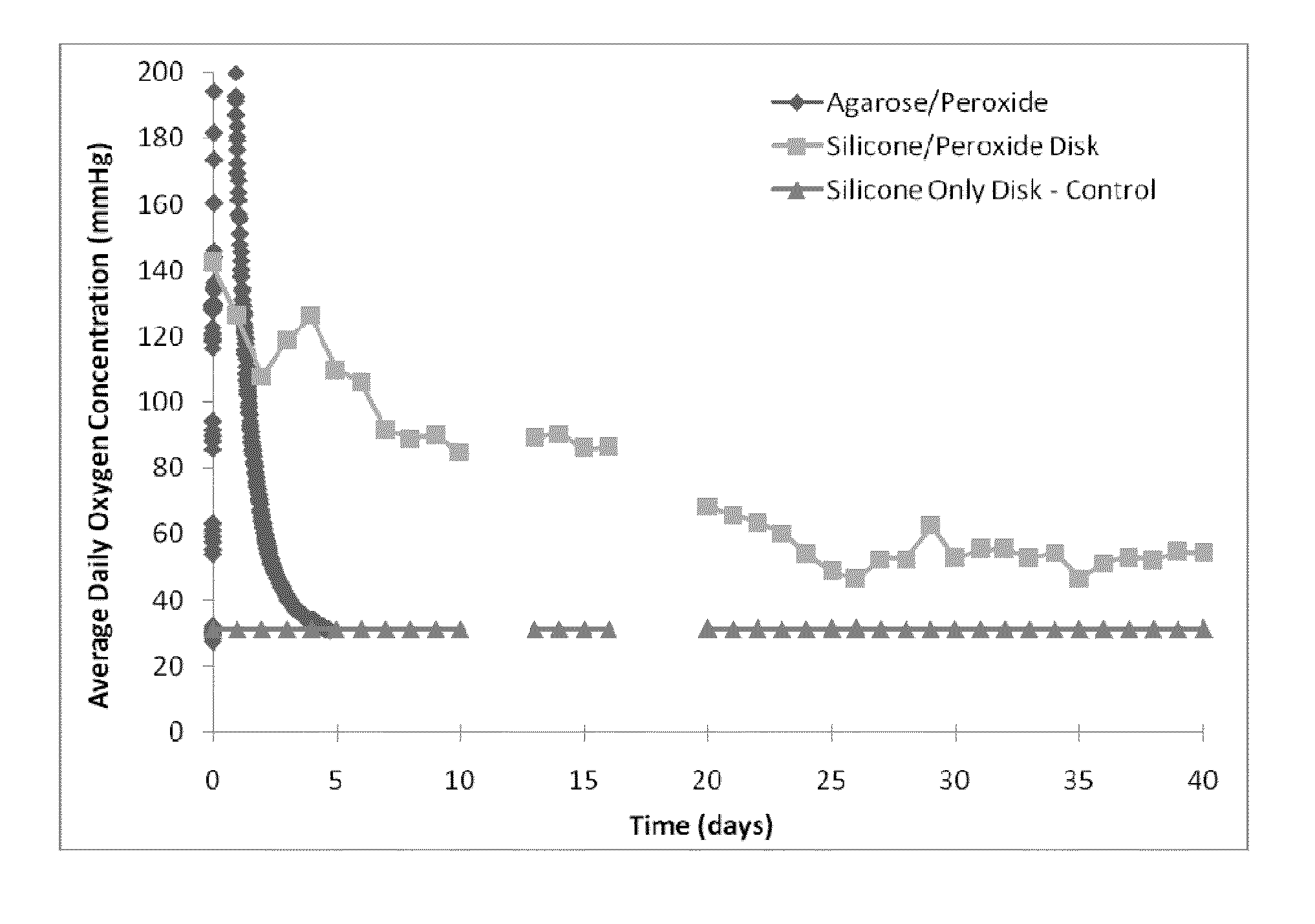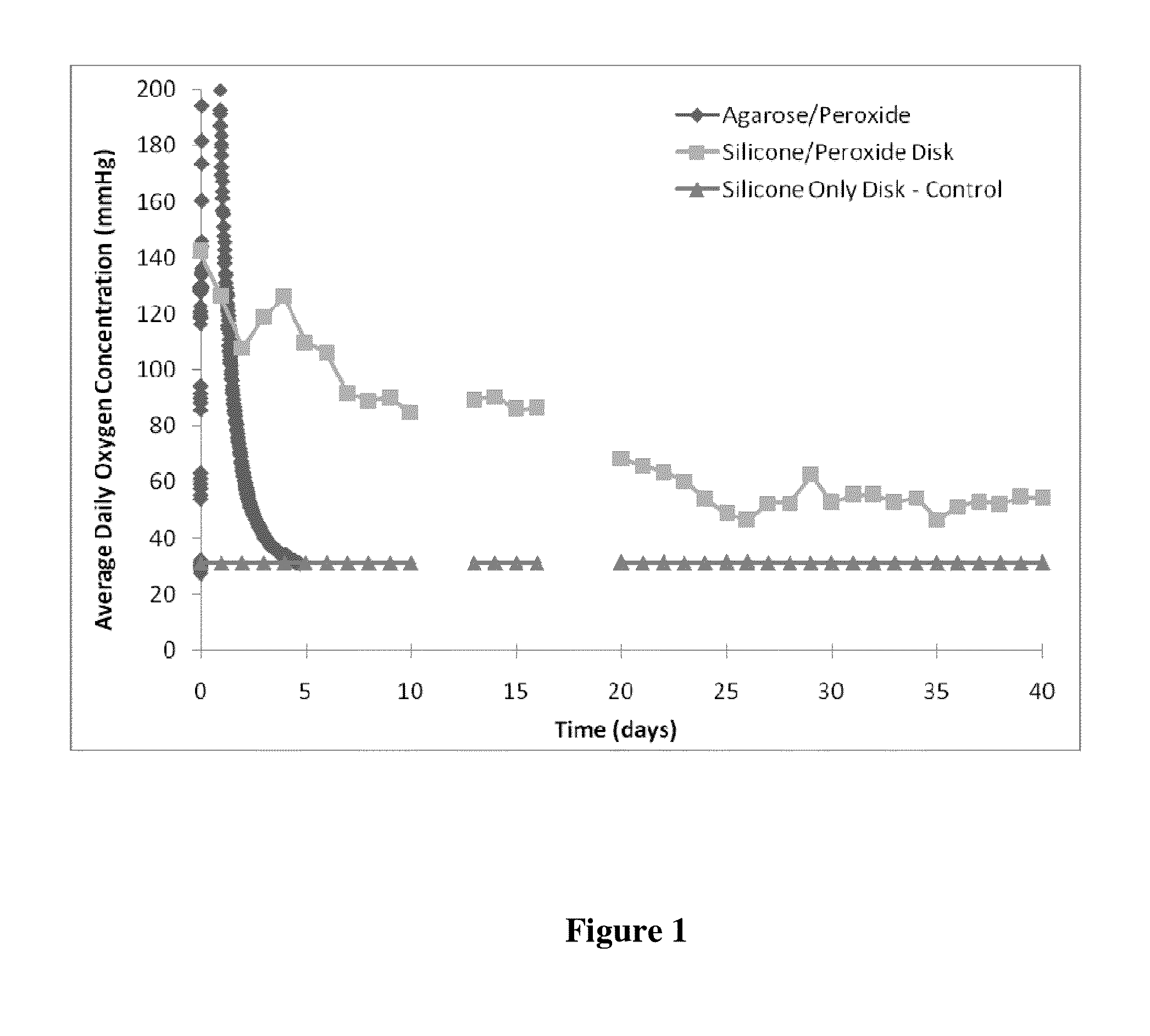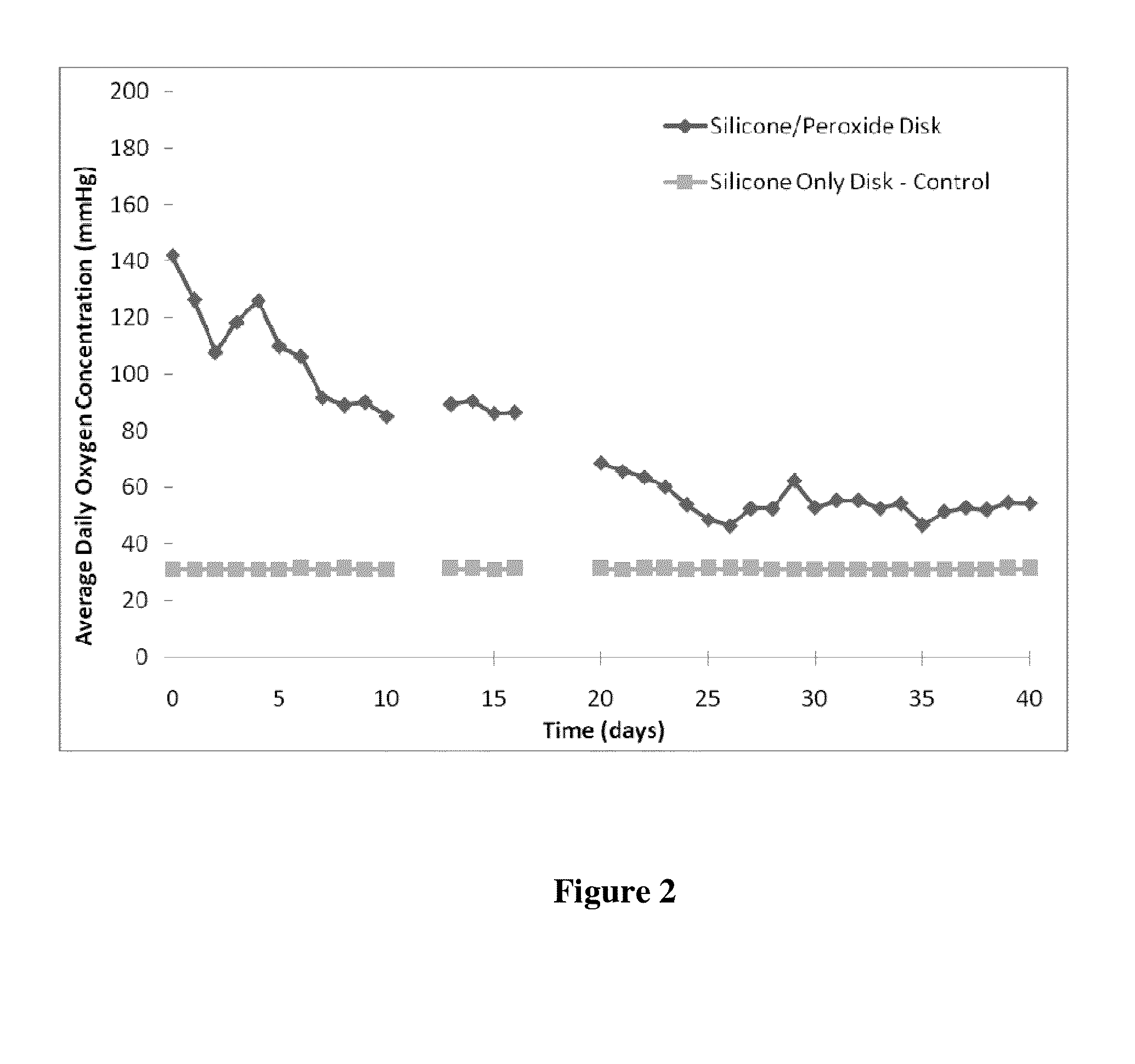Silicone-peroxide compositions for long-term, controlled oxygen release
a technology of oxygen release and composition, applied in the direction of biocide, drug composition, prosthesis, etc., can solve the problems of limited scope and duration of simple oxygen reservoir, limited ability to implant the device, and complicated method by the electronics required to generate oxygen
- Summary
- Abstract
- Description
- Claims
- Application Information
AI Technical Summary
Benefits of technology
Problems solved by technology
Method used
Image
Examples
examples
[0113]The oxygen releasing material was fabricated from non-degradable, hydrophobic materials, such as silicone, incorporated with a solid peroxide powder, i.e., calcium peroxide. The percent loading of the peroxide within the material and the geometry and dimensions of the final scaffold determine the overall release rates and longevity of oxygen release. The release of oxygen can be for at least 21 days. The release of oxygen is modulated by the diffusion of water into the hydrophobic material and the reaction of the peroxide with the water, forming by-products of hydrogen and oxygen. The use of a low diffusion material, generally a hydrophobic material, dramatically changes the characteristics of oxygen release, from a strong burst of oxygen over the course of 24 to 72 hours, to a moderate and sustained release of oxygen over the course of 14 to 45 days.
[0114]Materials
[0115]The hydrophobic material used for these studies was polydimethylsiloxane (PDMS), a medical grade silicone, ...
PUM
| Property | Measurement | Unit |
|---|---|---|
| diameter | aaaaa | aaaaa |
| diameter | aaaaa | aaaaa |
| particle size | aaaaa | aaaaa |
Abstract
Description
Claims
Application Information
 Login to View More
Login to View More - R&D
- Intellectual Property
- Life Sciences
- Materials
- Tech Scout
- Unparalleled Data Quality
- Higher Quality Content
- 60% Fewer Hallucinations
Browse by: Latest US Patents, China's latest patents, Technical Efficacy Thesaurus, Application Domain, Technology Topic, Popular Technical Reports.
© 2025 PatSnap. All rights reserved.Legal|Privacy policy|Modern Slavery Act Transparency Statement|Sitemap|About US| Contact US: help@patsnap.com



